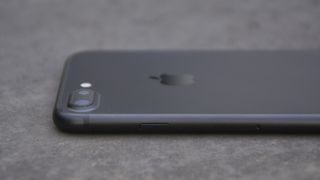iPhone 7 vs iPhone 6s: head to head review
How Apple's iPhone 7 and 7 Plus compare to their predecessors
Apple's iPhone 7 is out now, but as with any Apple launch, it's difficult to say whether you should upgrade now, or hang on to your old device until the next one comes out. Thankfully, we've put the two latest iPhone generations head to head to see whether it's worth picking up the latest model, or just waiting until the next one rolls around.
Display

| Row 0 - Cell 0 | iPhone 6s | iPhone 6s Plus | iPhone 7 | iPhone 7 Plus |
| Screen size | 4.7in | 5.5in | 4.7in | 5.5in |
| Resolution | 1334 x 750 | 1920 x 1080 | 1334 x 750 | 1920 x 1080 |
| Pixel density | 326ppi | 401ppi | 326ppi | 401ppi |
| Display features | Full sRGB standard | Full sRGB standard | Wide colour gamut | Wide colour gamut |
| sRGB coverage | 93.3% sRGB | 91.3% sRGB | 95.8% sRGB | 96.3% sRGB |
| Max brightness | 541.75cd/m2 | 583.61cd/m2 | 540cd/m2 | 520cd/m2 |
The display technology is not that different on the whole when comparing the 6s and the 7, in both size models. Apple has kept the 3D Touch functionality and has implemented a 25% increase in brightness as well as a wide colour gamut.
Other than that it is the same IPS LCD Retina screen we've seen before at the same sizes and resolutions. There's rumours that Apple kept this the same this year because there will be a big change over to OLED expected for 2017 with the launch of the iPhone 8.
Design

| Row 0 - Cell 0 | iPhone 6s | iPhone 6s Plus | iPhone 7 | iPhone 7 |
| Ports | Lightning, 3.5mm headphone jack | Lightning, 3.5mm headphone jack | Lightning | Lightning |
| Home key | Physical | Physical | Capacitive | Capacitive |
| IP67 waterproofing | No | No | Yes | Yes |
| Thickness | 7.1mm | 7.3mm | 7.1mm | 7.3mm |
| Weight | 143g | 192g | 138g | 188g |
Visually, both the iPhone 7 and iPhone 7 Plus are not massively far removed from the iPhone 6s and 6s Plus in terms of design. However, a key difference is that the antenna bands have been moved to the upper and lower edges, which makes them more discrete. In terms of dimensions, the thickness is unchanged and there's been a scant handful of grams shaved off from the weight.
The other major changes come in the form of the Home key, which is now a capacitive, touch-sensitive panel rather than a physical button. It features a Haptic feedback engine and can perform a range of software functions, including the Touch ID fingerprint scanner. On top of this, the iPhone 7 series is the first family of iPhones which are fully IP67 water and dust proof, for up to 30 minutes submerged in water.
For some people, the ability to drop your iPhone safely in a bath might be reason enough alone to upgrade, but in most other respects the iPhone 7 and iPhone 7 Plus is very similar to what came before.
As well as being the first waterproof iPhone, the iPhone 7 and iPhone 7 Plus are the first smartphones by Apple to feature stereo speakers. Apple has also ditched the 3.5mm headphone jack and audio is now handled through the Lightning port (or wirelessly via Bluetooth).
Get the ITPro. daily newsletter
Receive our latest news, industry updates, featured resources and more. Sign up today to receive our FREE report on AI cyber crime & security - newly updated for 2024.




